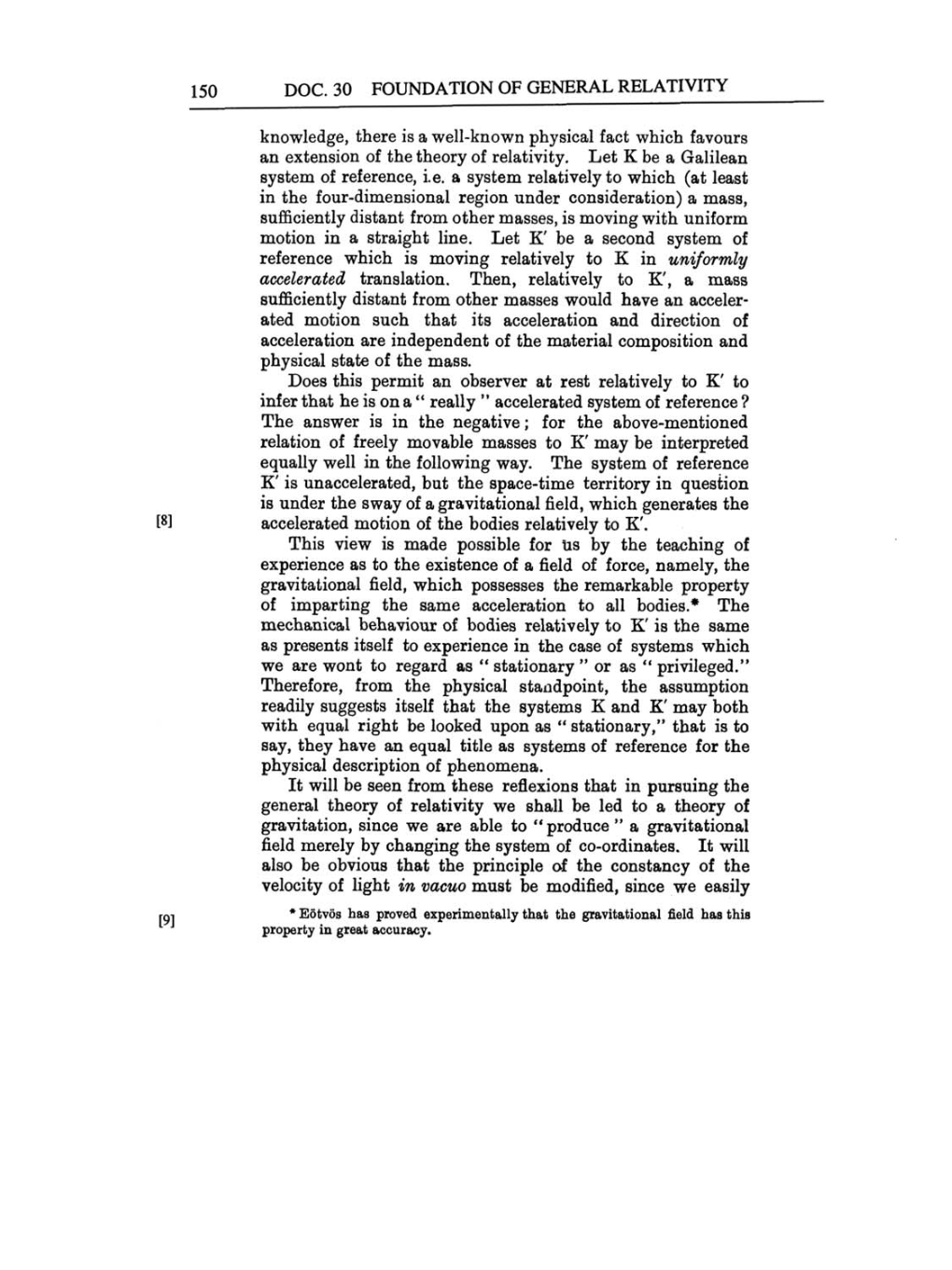150
DOC. 30
FOUNDATION OF
GENERAL RELATIVITY
knowledge,
there
is
a
well-known
physical
fact
which favours
an
extension
of
the
theory
of relativity.
Let
K
be
a
Galilean
system
of reference, i.e.
a
system relatively
to which
(at
least
in
the
four-dimensional
region
under
consideration)
a
mass,
sufficiently
distant
from
other
masses,
is
moving
with uniform
motion
in
a
straight
line.
Let
K' be
a
second
system of
reference
which
is
moving relatively
to K
in
uniformly
accelerated
translation.
Then,
relatively
to
K',
a mass
sufficiently
distant
from
other
masses
would have
an
acceler-
ated motion such that its
acceleration and
direction of
acceleration
are
independent
of the
material
composition
and
physical
state of
the
mass.
Does
this
permit
an
observer at rest
relatively
to K' to
infer that he
is
on
a
"really"
accelerated
system
of
reference?
The
answer
is
in
the
negative;
for the
above-mentioned
relation
of
freely
movable
masses
to K'
may
be
interpreted
equally
well
in the
following
way.
The
system
of reference
K' is
unaccelerated,
but the
space-time
territory
in
question
is
under the
sway
of
a
gravitational
field,
which
generates
the
[8]
accelerated
motion
of
the
bodies
relatively
to K'.
This
view
is
made
possible
for
us
by
the
teaching
of
experience
as
to
the
existence
of
a
field
of
force,
namely,
the
gravitational
field,
which
possesses
the remarkable
property
of
imparting
the
same
acceleration to all bodies.*
The
mechanical
behaviour of bodies
relatively
to
K' is
the
same
as
presents
itself to
experience
in the
case
of
systems
which
we are
wont to
regard
as
"stationary"
or
as
"privileged."
Therefore,
from
the
physical
standpoint,
the
assumption
readily
suggests
itself
that the
systems
K and
K'
may
both
with
equal
right
be looked
upon
as
"stationary,"
that
is
to
say, they
have
an equal
title
as
systems
of reference for
the
physical description
of
phenomena.
It
will be
seen
from
these
reflexions
that in
pursuing
the
general
theory
of
relativity
we
shall be led to
a
theory
of
gravitation,
since
we are
able to
"produce"
a
gravitational
field
merely by changing
the
system
of co-ordinates.
It
will
also be obvious
that the
principle
of
the
constancy
of
the
velocity
of
light
in
vacuo
must be
modified,
since
we
easily
[9]
*
Eötvös has
proved experimentally
that
the
gravitational field
has this
property
in
great accuracy.
